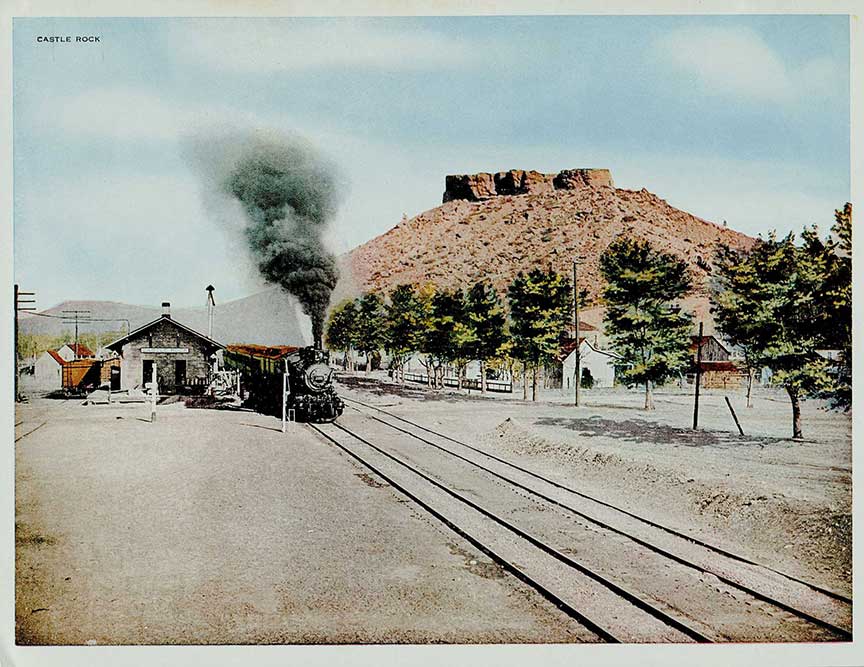Castle Rock

The Castle Rock railroad station was constructed in 1875, just a year after the town was founded. The station was built to serve the Denver and Rio Grande Railway (D&RG), which was a vital part of the region's transportation network. The arrival of the railroad was crucial for the town's growth, facilitating the transport of rhyolite stone from local quarries, as well as agricultural products and other goods.
Architectural Features
The original depot was a typical example of late 19th-century railroad architecture. It featured wooden construction with a pitched roof, wide eaves, and a spacious platform to accommodate passengers and freight. The design was practical, reflecting the needs of a growing town that relied heavily on rail transport.
Role in Economic Development
The Castle Rock railroad station significantly contributed to the economic development of the area. The easy transport of rhyolite stone was particularly important. Many buildings in Denver and other cities were constructed using this stone, making Castle Rock a key supplier. Additionally, the station facilitated the movement of agricultural products, livestock, and other goods, helping local farmers and businesses thrive.
Changes and Decline
As the 20th century progressed, the role of the railroad began to change. The rise of automobile travel and trucking led to a decline in passenger and freight rail services. By the mid-20th century, the Castle Rock station saw a decrease in rail traffic. The station building itself underwent several changes, reflecting the shifting needs and economic conditions of the time.
